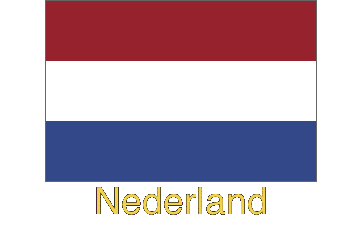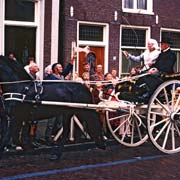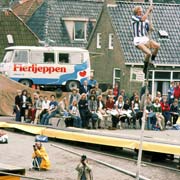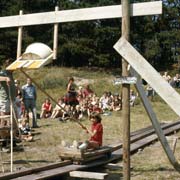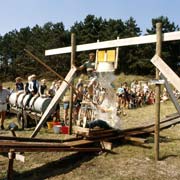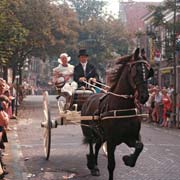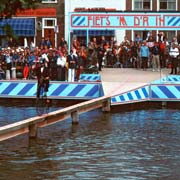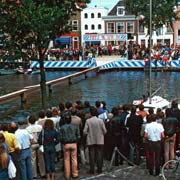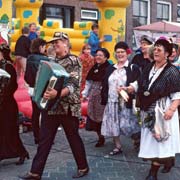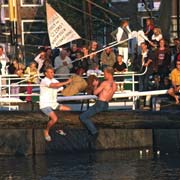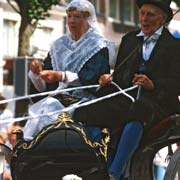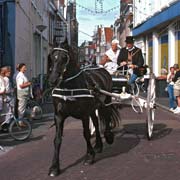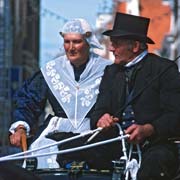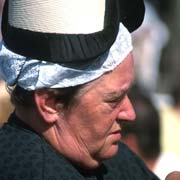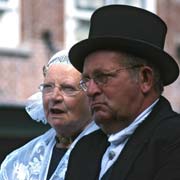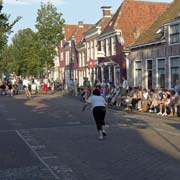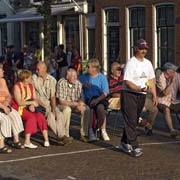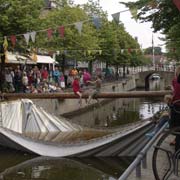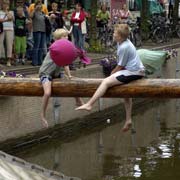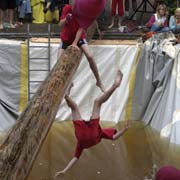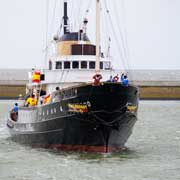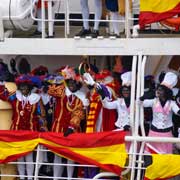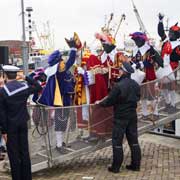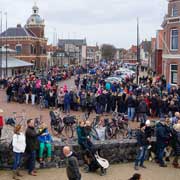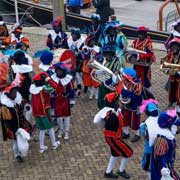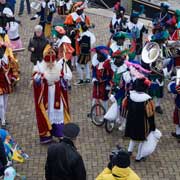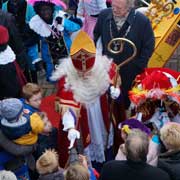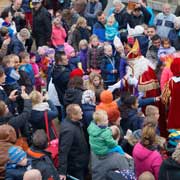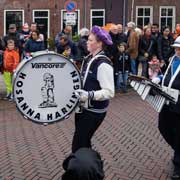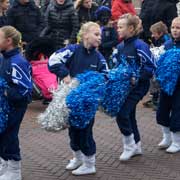Photos of Traditions and Folklore in Friesland, the Netherlands
Traditions and Folklore in Friesland
Like in the Netherlands and indeed in most of Europe and the rest of the world, Frisian people are well and truly world citizens and outwardly in their daily lives little different from people elsewhere living a western life style. However, there are still aspects of a culture dating back in time and opportunities to see the old costumes as they were worn by well-to-do farmers in the 19th Century.
you may then send it as a postcard if you wish.
On special occasions there are competitions in "Ringrijden", involving couples in rich Frisian costumes riding two-wheeled buggies called "sjees", which are beautifully decorated and pulled by thoroughbred black Frisian horses. The couples ride a circuit through the town with along the route at regular intervals a wooden "arm", attached to an upright pole with a hinge. A brass ring is stuck between two "fingers" of the wooden hand and the woman holds a short wooden spike, looking suspiciously like a pistol, onto which she aims to collect the rings while going past at a steady trot. Obviously the couple collecting most rings wins. There are also various folk dancing clubs but, as with "Ringrijden", these are now mostly only performed by older people. Couples dance to the accompaniment of a small orchestra, including an accordion and violin.
For younger people there are competitions in "Fierljeppen", where young men jump across waterways using long poles. This has obviously grown from living on the land, crisscrossed by many canals and boys, roaming around, used to carry long poles to jump across them.
"Tobbesteken" can be found on the Frisian island of Terschelling (Skylge in Frisian) where (young) competitors hurtle along a track in a small cart, armed with a long pole with which they try to collect a ring, attached to a board underneath a tub, hinged above the track, full of water; of course, when they miss it and hit the board, they get a thorough drenching.
Sinterklaas (Sint Nicolaas) is a tradition, not only in Fryslân, but in all of the Netherlands, celebrated every year with the giving of gifts on 5 December, the night before Saint Nicholas Day. Although based on a historic 4th-century Christian saint and Greek Bishop of Myra in present-day Turkey, he is supposed to come from Spain by boat, accompanied by his black-faced helpers, "Zwarte Piet", in colourful costumes in mid-November, and makes his entry into town, like here in Harlingen. It is a great occasion, especially for children.


